Cleaning Schedule Samples
-
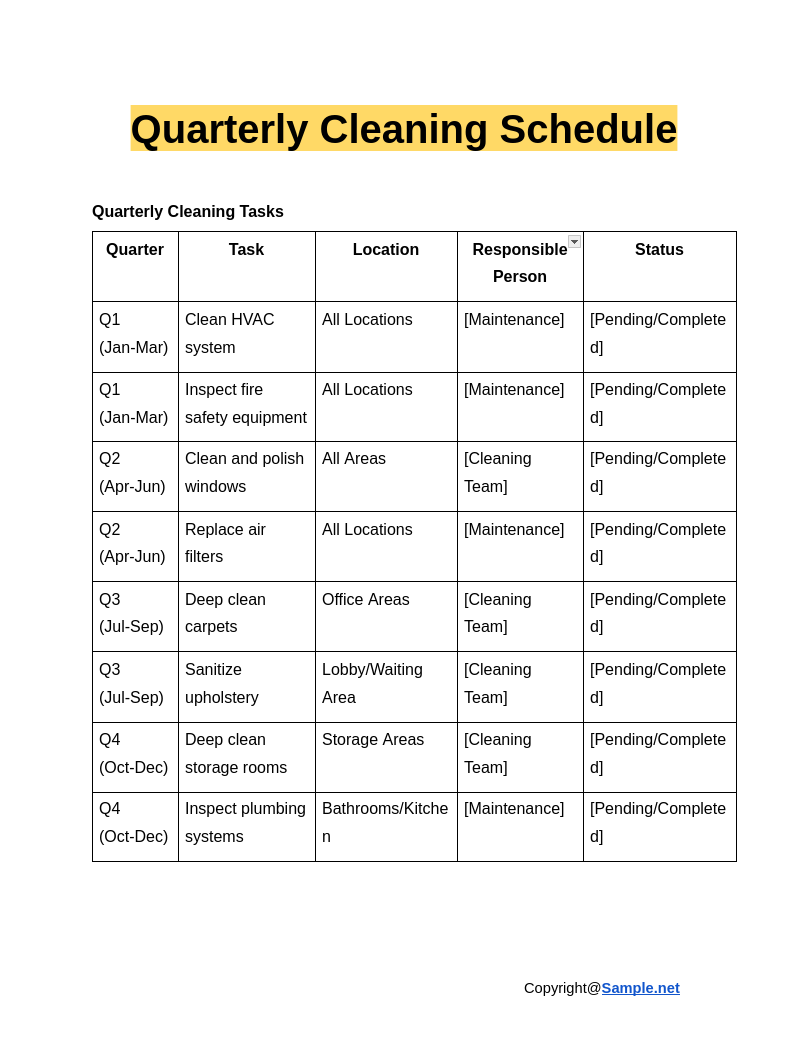
Quarterly Cleaning Schedule
download now -
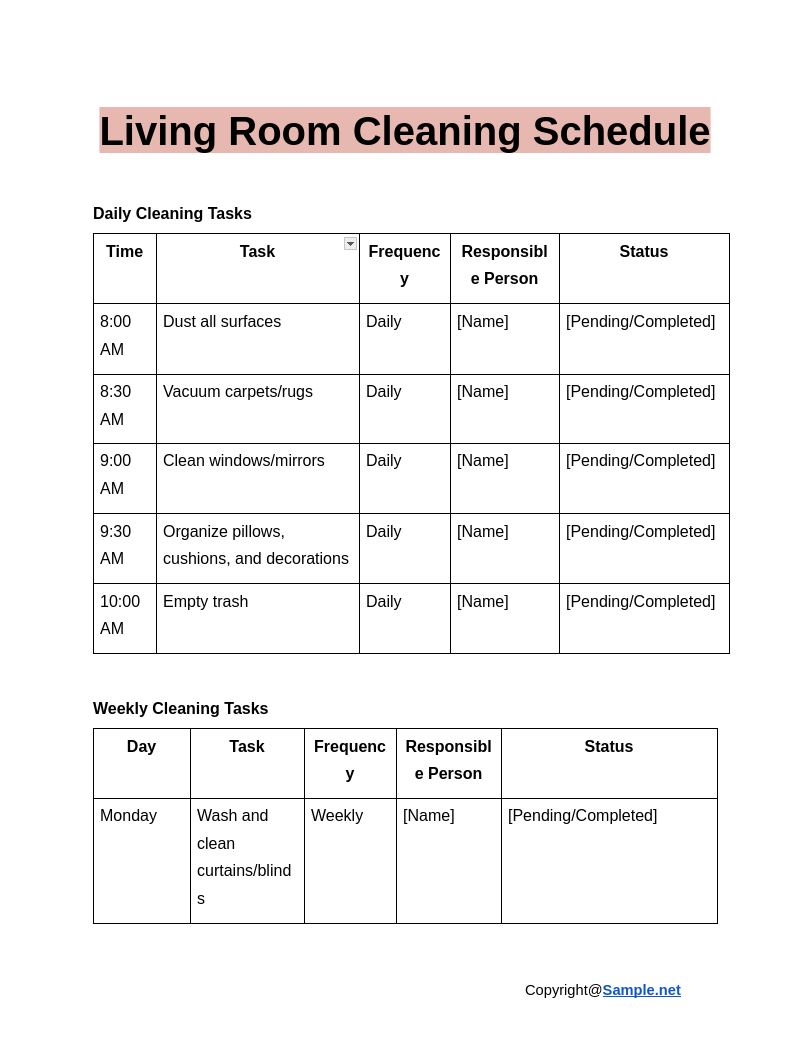
Living Room Cleaning Schedule
download now -
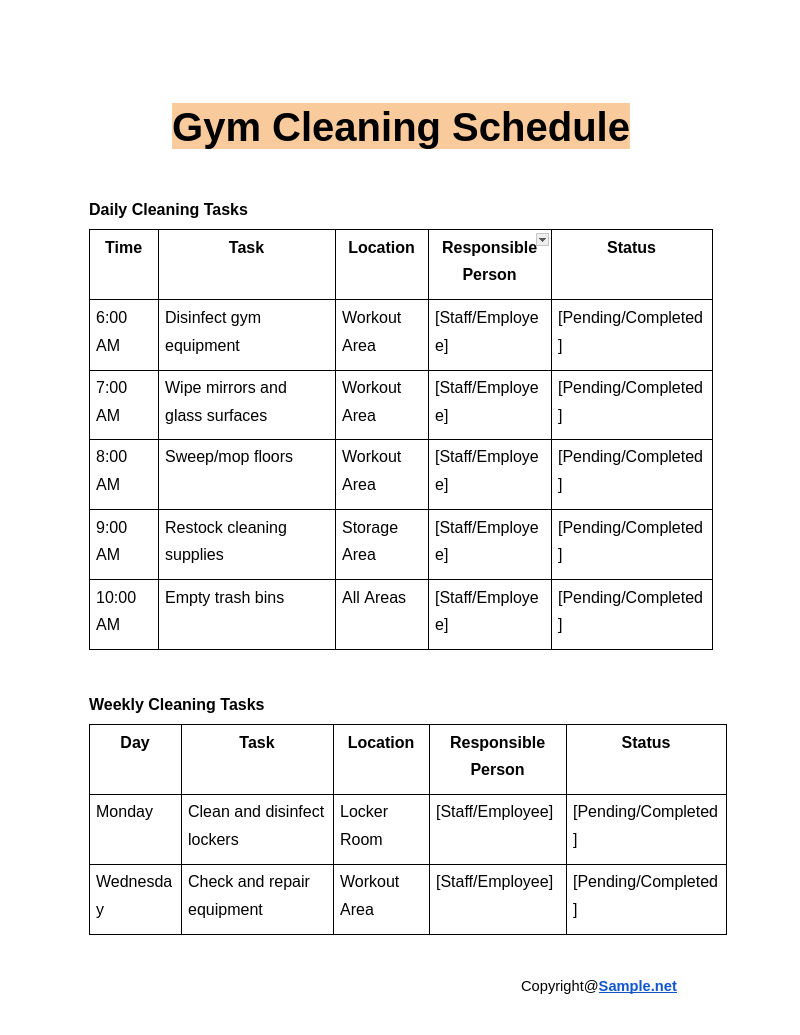
Gym Cleaning Schedule
download now -
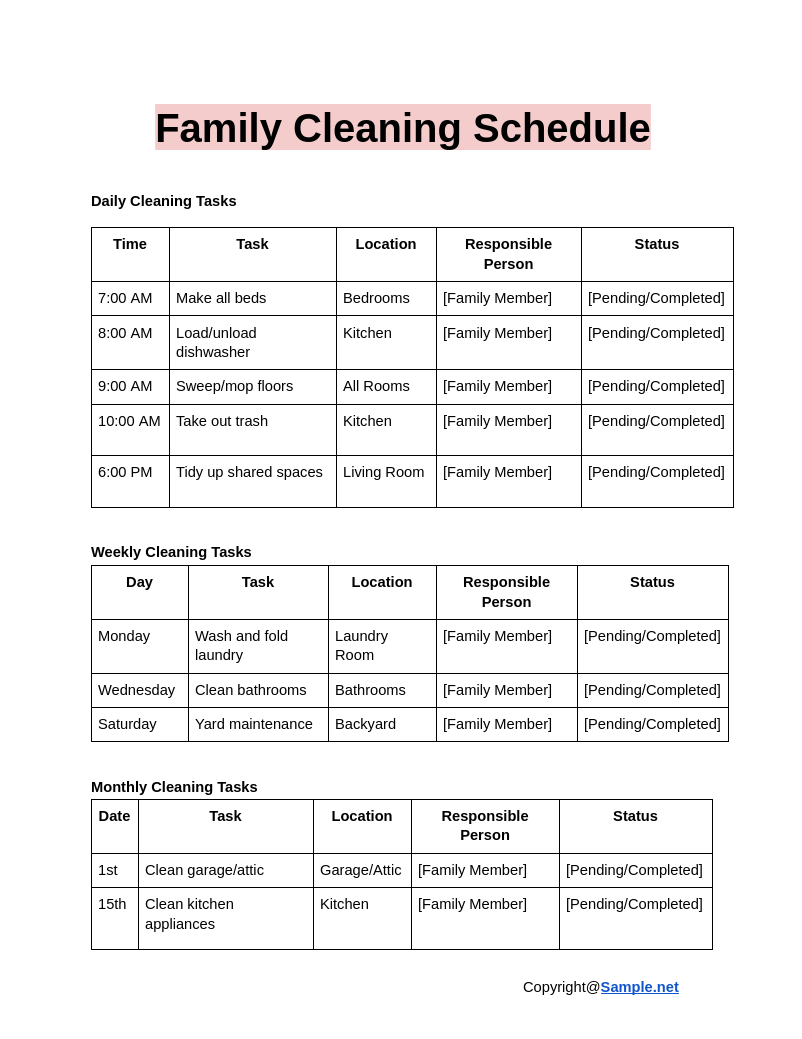
Family Cleaning Schedule
download now -

Child Care Cleaning Schedule
download now -
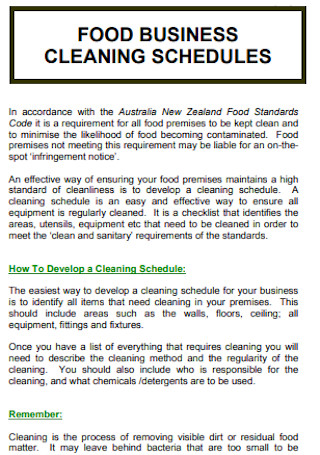
Food Business Cleaning Schedule
download now -
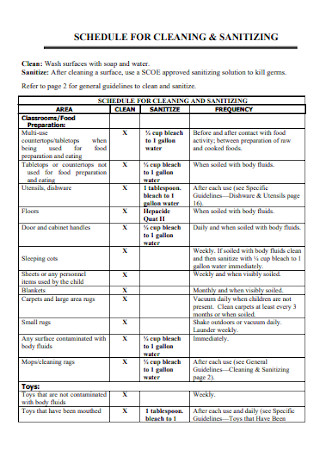
Cleaning and Sanitizing Schedule
download now -
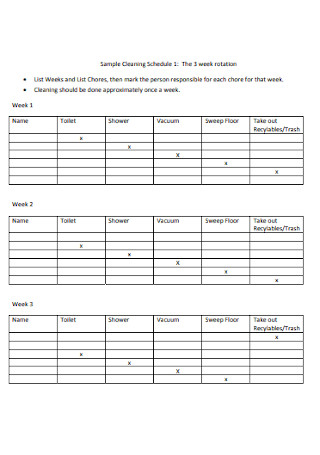
Sample Cleaning Rotation Schedule
download now -
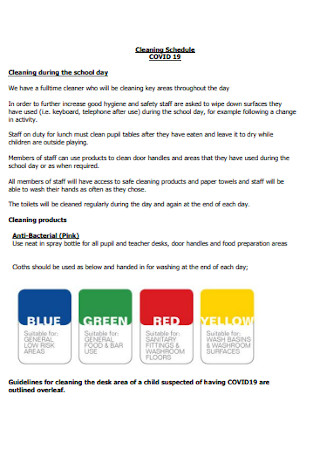
School Cleaning Schedule
download now -
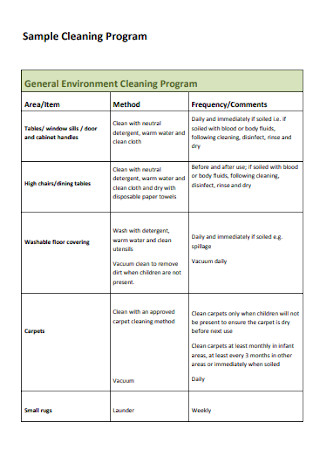
Sample Cleaning Program Schedule
download now -

Simple Cleaning Schedule Template
download now -
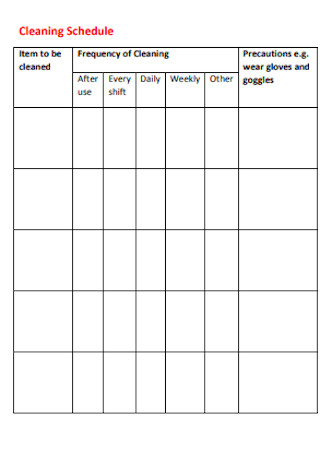
Cleaning Schedule Format
download now -
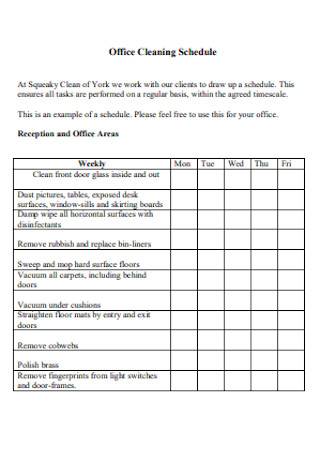
Office Cleaning Schedule
download now -
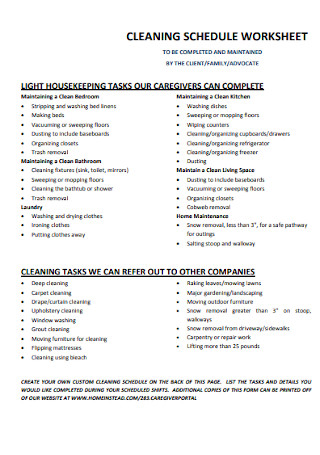
Cleaning Schedule Worksheet
download now -
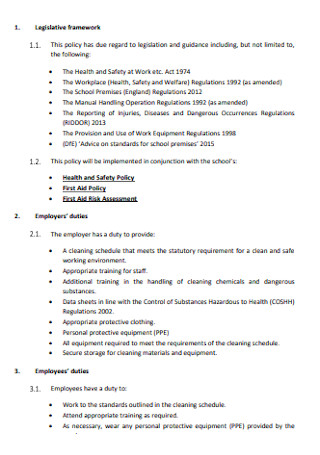
Cleaning Policy and Schedule
download now -
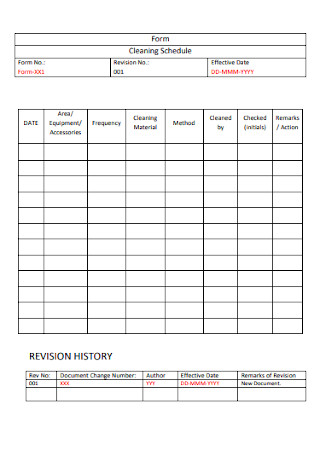
Cleaning Schedule Form
download now -
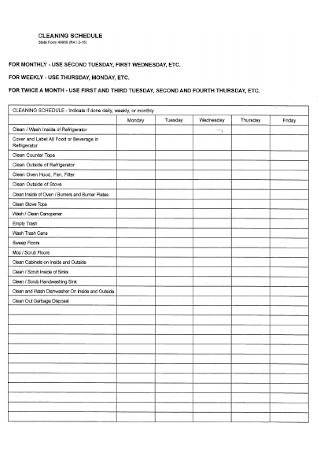
Weekly Cleaning Schedule
download now -
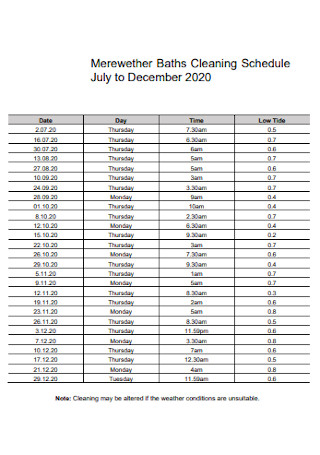
Baths Cleaning Schedule
download now -
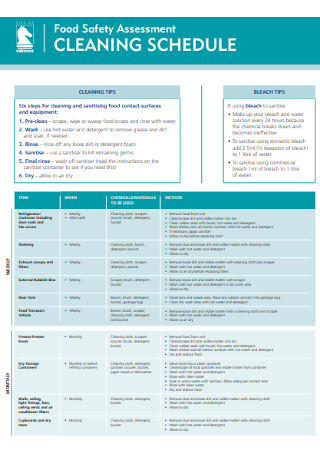
Food Safety Cleaning Schedule
download now -
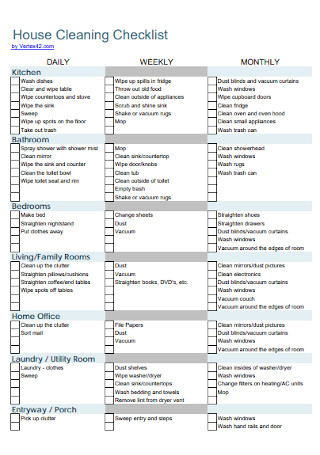
House Cleaning Checklist Schedule
download now -
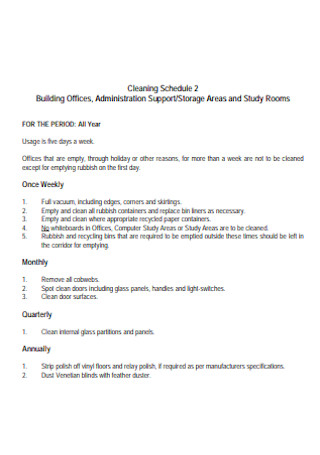
Building Offices Cleaning Schedule
download now -

Daily Cleaning Schedule
download now -
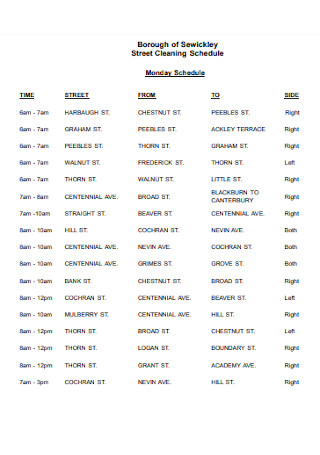
Street Cleaning Schedule
download now -
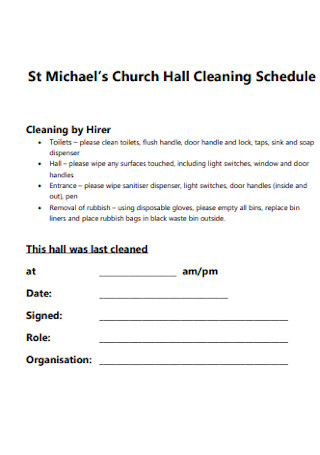
Church Hall Cleaning Schedule
download now -
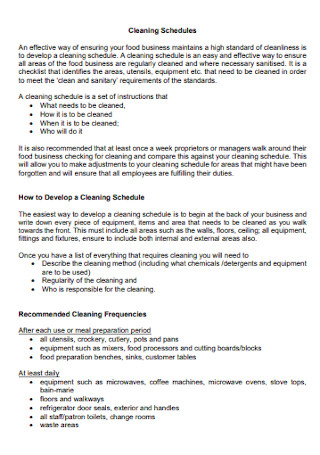
Health Cleaning Schedule
download now -
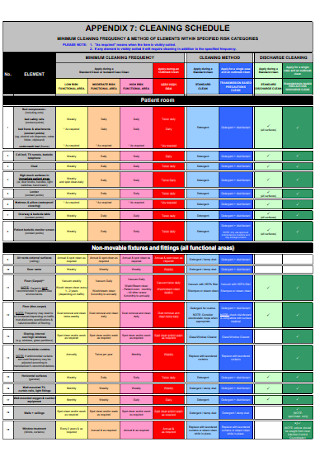
Standard Cleaning Schedule Template
download now -
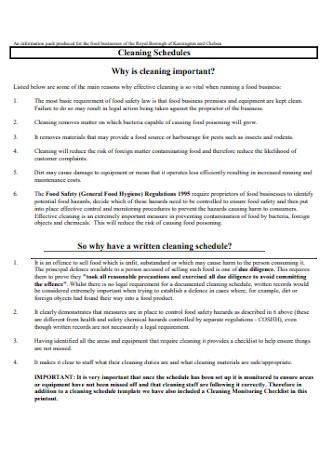
Formal Cleaning Schedules Template
download now -
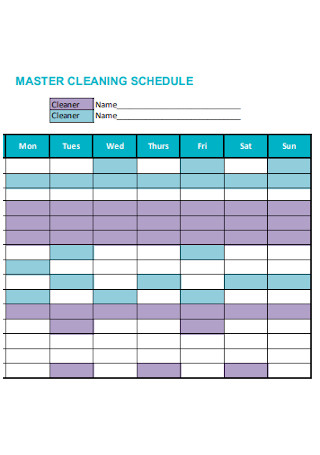
Master Cleaning Schedule
download now -

Luxurious Life Cleaning Schedule
download now -
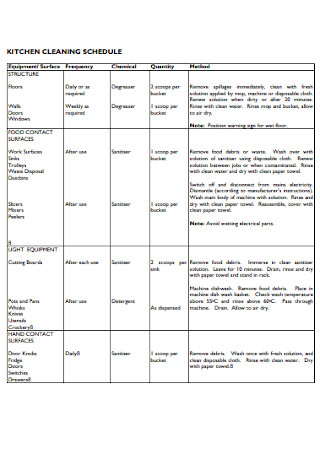
Kitchen Cleaning Schedule
download now -
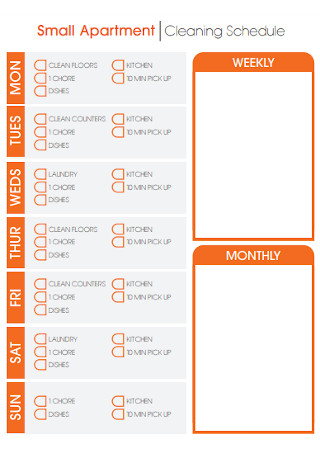
Small Apartment Cleaning Schedule
download now -
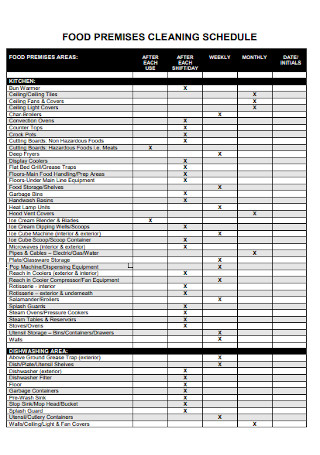
Food Premesis Cleaning Schedule
download now -

Room Cleaning Schedule
download now -
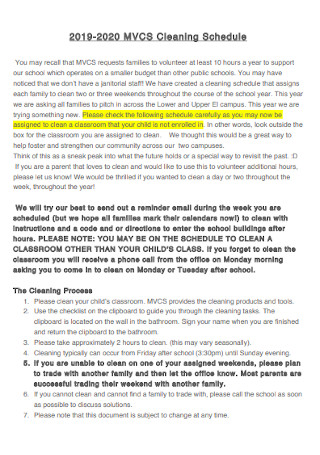
Volunteer Cleaning Schedule
download now -
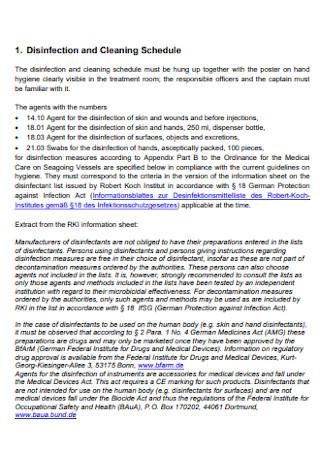
Disinfection and Cleaning Schedule
download now -
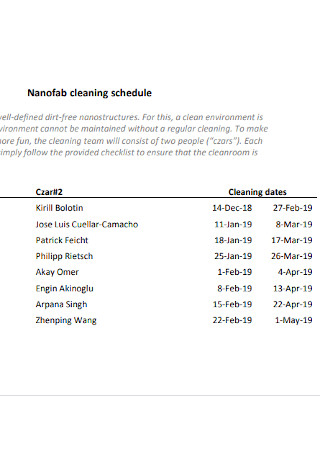
Nanofab Cleaning Schedule
download now -
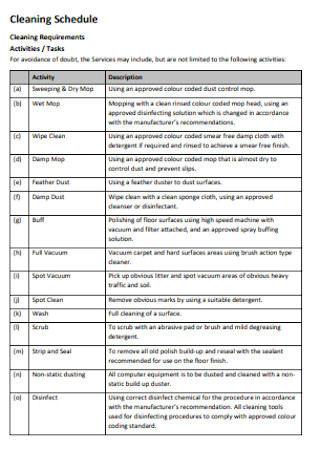
Cleaning Requirements Schedule
download now -
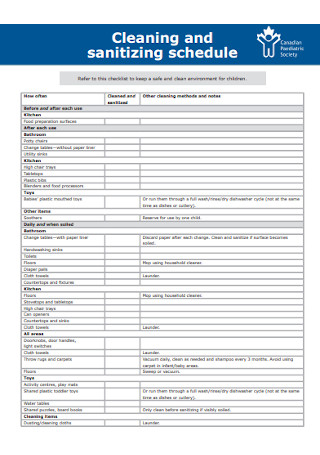
Cleaning and Sanitizing Schedule Template
download now -
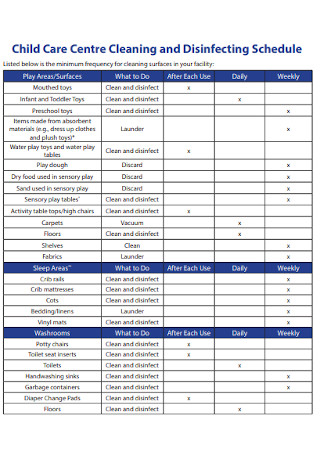
Cleaning and Disinfecting Schedule
download now -

Child Care Cleaning and Schedule
download now -
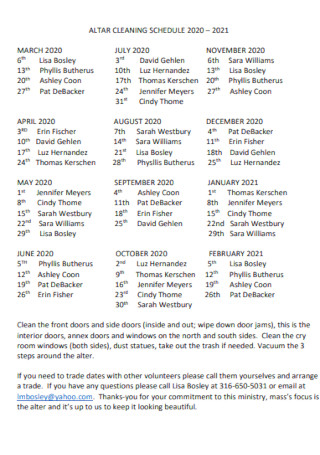
Altar Cleaning Schedule
download now -
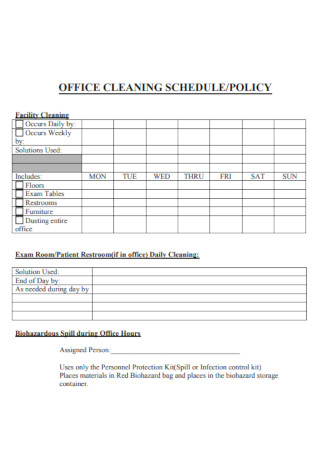
Office Cleaning and Policy Schedule
download now -
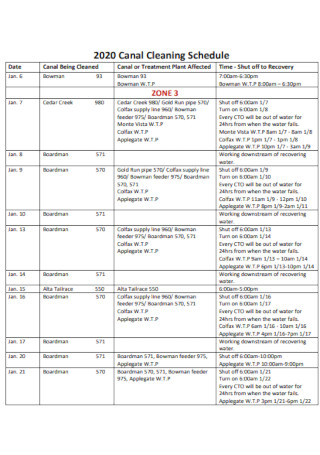
Canal Cleaning Schedule
download now -
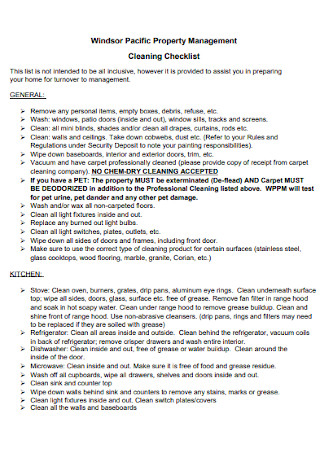
Property Cleaning Schedule
download now -
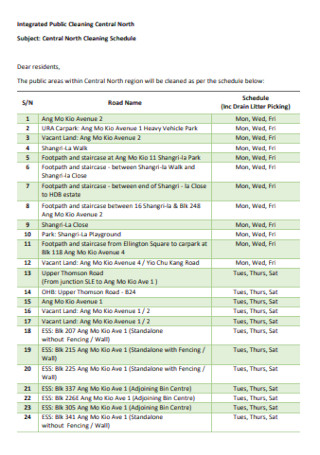
Integrated Public Cleaning Schedule
download now -
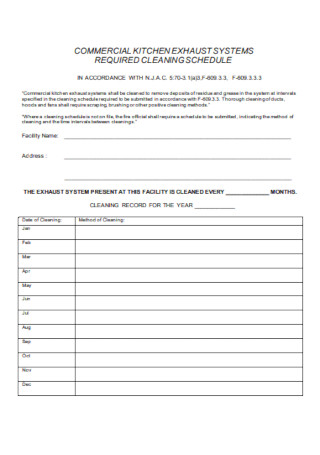
Commercial Kitchen Cleaning Schedule
download now -
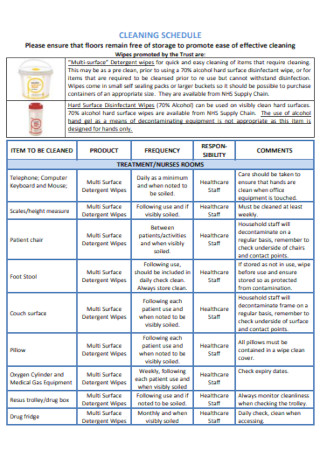
Floors Cleaning Schedule
download now -
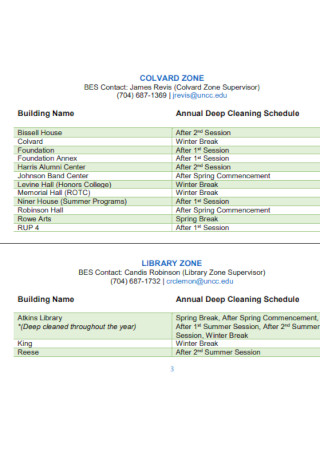
Annual Deep Cleaning Schedule
download now -
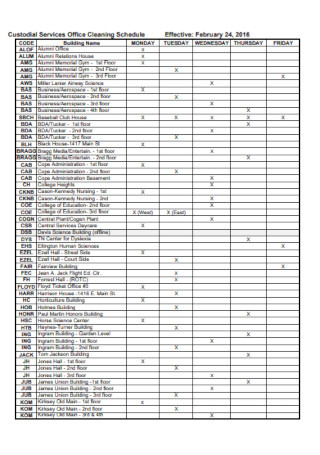
Custodial Services Office Cleaning Schedule
download now -
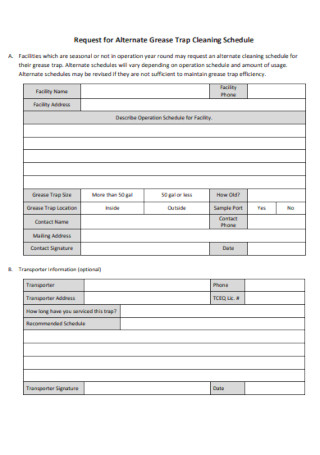
Grease Trap Cleaning Schedule
download now -
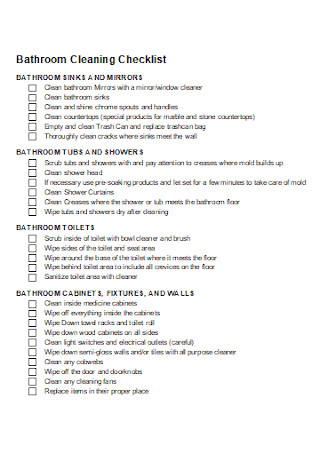
Bathroom Cleaning Checklist Schedule
download now -
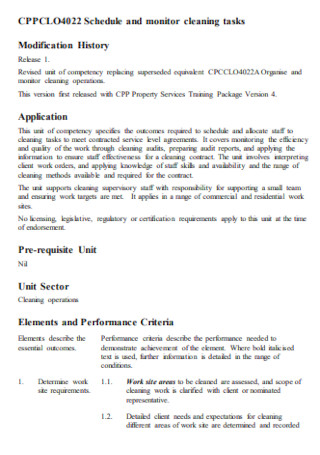
Schedule and Monitor Cleaning Tasks
download now -

Hauler Certification Test
download now
FREE Cleaning Schedule s to Download
Cleaning Schedule Format
Cleaning Schedule Samples
What is a Cleaning Schedule?
Why Are Cleaning Schedules Important?
How to Craft an Excellent Cleaning Schedule
FAQs
What are the main types of cleaning schedules?
What makes a good weekly cleaning schedule?
What are the six stages of cleaning?
What are the benefits of a cleaning schedule?
How often should I update my cleaning schedule?
How do I create a cleaning schedule for an office?
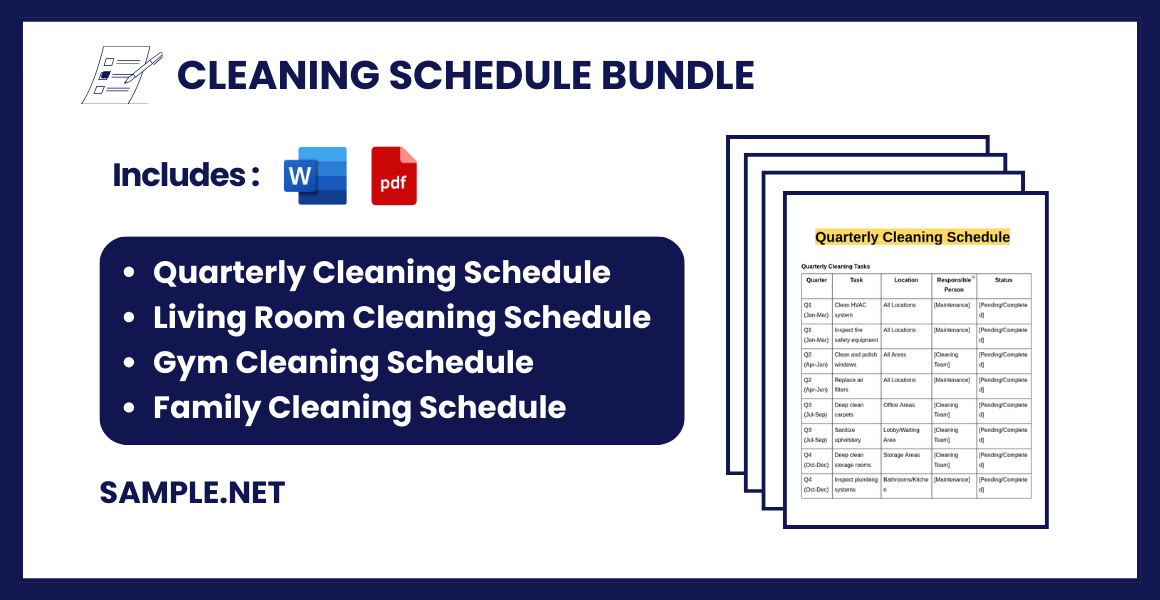
Download Cleaning Schedule Bundle
Cleaning Schedule Format
1. General Information
- Location/Area: [Specify the area or facility to be cleaned]
- Prepared by: [Name of the person responsible for creating the schedule]
- Effective Date: [Start date of the schedule]
- Review Date: [When the schedule will be reviewed/updated]
2. Daily Cleaning Tasks
| Time | Task | Area/Location | Frequency | Responsible Person | Status |
|---|---|---|---|---|---|
| [Time] | [Task name] | [Location/Area] | [Daily/Weekly] | [Employee Name/Title] | [Pending/Completed] |
| [Time] | [Task name] | [Location/Area] | [Daily/Weekly] | [Employee Name/Title] | [Pending/Completed] |
| [Time] | [Task name] | [Location/Area] | [Daily/Weekly] | [Employee Name/Title] | [Pending/Completed] |
3. Weekly Cleaning Tasks
| Day | Time | Task | Area/Location | Frequency | Responsible Person | Status |
|---|---|---|---|---|---|---|
| [Monday] | [Time] | [Task name] | [Location/Area] | [Weekly] | [Employee Name/Title] | [Pending/Completed] |
| [Tuesday] | [Time] | [Task name] | [Location/Area] | [Weekly] | [Employee Name/Title] | [Pending/Completed] |
| [Wednesday] | [Time] | [Task name] | [Location/Area] | [Weekly] | [Employee Name/Title] | [Pending/Completed] |
4. Monthly Cleaning Tasks
| Date | Time | Task | Area/Location | Frequency | Responsible Person | Status |
|---|---|---|---|---|---|---|
| [1st] | [Time] | [Task name] | [Location/Area] | [Monthly] | [Employee Name/Title] | [Pending/Completed] |
| [15th] | [Time] | [Task name] | [Location/Area] | [Monthly] | [Employee Name/Title] | [Pending/Completed] |
| [30th] | [Time] | [Task name] | [Location/Area] | [Monthly] | [Employee Name/Title] | [Pending/Completed] |
5. Seasonal/Deep Cleaning Tasks
| Season | Time | Task | Area/Location | Frequency | Responsible Person | Status |
|---|---|---|---|---|---|---|
| [Spring] | [Time] | [Deep Cleaning Task] | [Location/Area] | [Seasonal] | [Employee Name/Title] | [Pending/Completed] |
| [Summer] | [Time] | [Deep Cleaning Task] | [Location/Area] | [Seasonal] | [Employee Name/Title] | [Pending/Completed] |
| [Fall] | [Time] | [Deep Cleaning Task] | [Location/Area] | [Seasonal] | [Employee Name/Title] | [Pending/Completed] |
| [Winter] | [Time] | [Deep Cleaning Task] | [Location/Area] | [Seasonal] | [Employee Name/Title] | [Pending/Completed] |
6. Additional Notes/Instructions
- [Include any special instructions, safety guidelines, or cleaning product details.]
7. Signatures
- Manager/Supervisor: _________________________
- Date: [Date signed]
- Reviewed by: _________________________
- Date: [Date signed]
What is a Cleaning Schedule?
A cleaning schedule marks your official document to list down the cleaning tasks and responsibilities for the house, school, office, cafe, restaurant, church, or any establishment. And rather than just a typical cleaning checklist, a cleaning schedule is more detailed since it has specific dates. You can set your cleaning schedule on a daily, weekly, or monthly basis. And cleaners can depend on these schedules so they won’t miss a spot of what to clean and when to do so.
Why Are Cleaning Schedules Important?
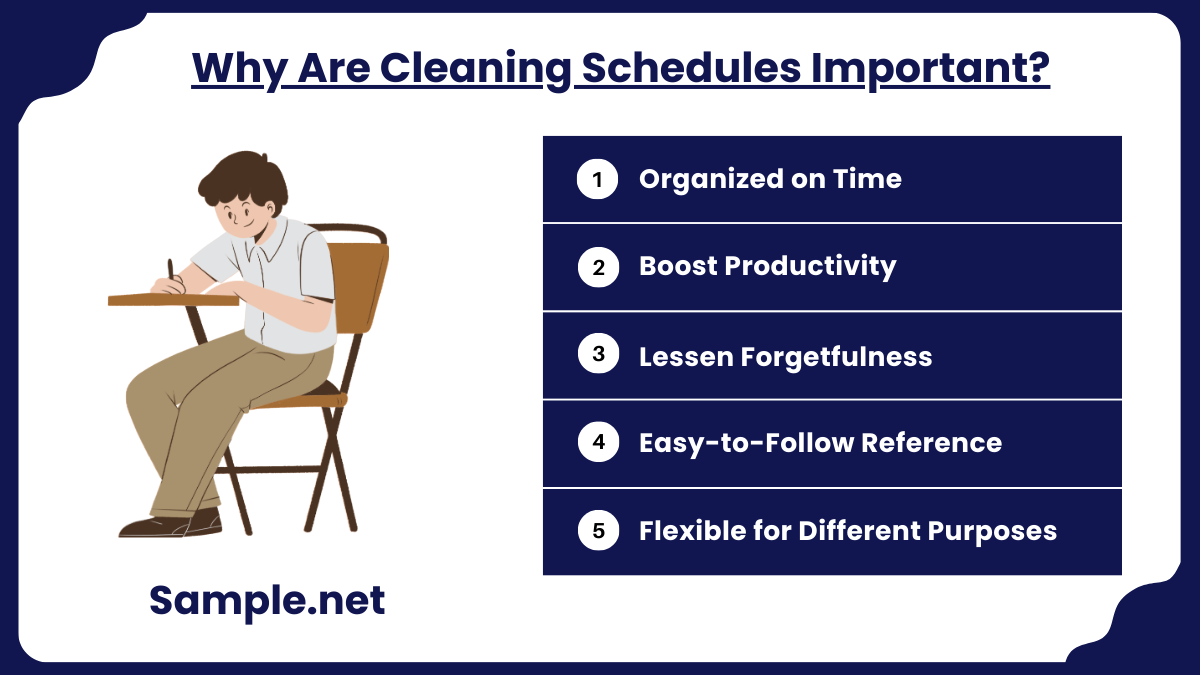
Indeed, cleaning promotes a greener environment and lessens the buildup of molds, bacteria, etc. So rather than cleaning whenever you want, why is there a need to make a cleaning schedule in the first place? In this section, get to know the major reasons as to why cleaning schedules are essential.
1. Organized on Time
Anyone can make a cleaning to-do list in terms of what to clean and where to clean. But when you use a cleaning schedule, there is a timeframe. This is the best tool you can use so you won’t miss a schedule with your cleaning duties. You are allowed to decide how frequently you clean in a week, month, or year. If you dislike the concept of a daily cleaning schedule, you can set it on a weekly, bi-weekly, monthly, quarterly, or yearly basis instead. Also, you can be specific with the time by estimating cleaning hours and minutes.
2. Boost Productivity
A cleaning schedule is your ultimate solution to being productive. Maybe you tend to get busy from work that you get lazy on the weekends; thus, you forget to do your chore list. The great part about cleaning schedules is you can set targets and deadlines. So you will definitely be encouraged to clean according to specific dates. Rest assured, your efforts will pay off because you will feel better after achieving every task.
3. Lessen Forgetfulness
If you are forgetful or know someone who easily forgets about cleaning tasks and duties, then allow cleaning schedules to help. You now have a document that reminds you of your cleaning schedule all the time. So rather than trying to memorize your cleaning duties every single time, at least you can trust on the schedule you have prepared to clean effectively and efficiently. You can also see more on Daily Work Schedules.
4. Easy-to-Follow Reference
Another feature that makes a cleaning schedule special is how you can come up with your own easy-to-follow schedule for reference. Using creative and professionally made sample templates, you need not use generic or uninspiring cleaning schedules. You will certainly appreciate your reference since you can design the schedule’s layout, content, and data as your own rather than having someone make a complicated example for you.
5. Flexible for Different Purposes
Last but not least, cleaning schedules are helpful for all sorts of purposes. The schedule is flexible whether you need to design your cleaning schedule for household cleaning, office cleaning, or any other function. Also, you can adjust the content and design according to who your target audience is. Remember that what is easy for you might be challenging for someone else. So if you are making a cleaning schedule for someone else, let them collaborate in the schedule-making process so you would know their preferences. You can also see more on House Cleaning Schedules.
How to Craft an Excellent Cleaning Schedule
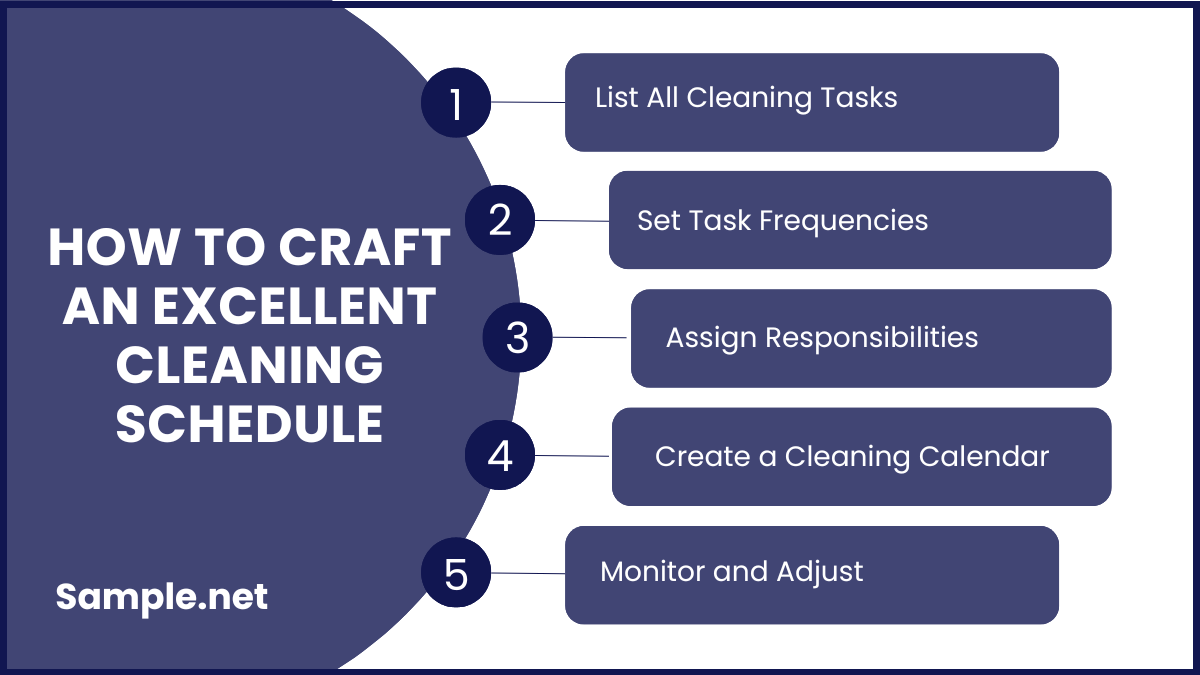
1. List All Cleaning Tasks
Start by identifying all the cleaning tasks that need to be completed in each area of your space, whether it’s a home, office, or commercial facility. Break down the tasks into specific actions, such as dusting surfaces, vacuuming carpets, mopping floors, cleaning windows, and disinfecting frequently touched surfaces. Categorize them as daily, weekly, monthly, or seasonal tasks to create a comprehensive list that covers all cleaning needs. You can also see more on Training Schedules.
2. Set Task Frequencies
Once you have a list of tasks, assign a frequency to each one. Some tasks, like washing dishes or wiping kitchen counters, may need to be done daily. Others, like vacuuming or cleaning windows, might only be necessary on a weekly or monthly basis. Establishing task frequencies helps prioritize the most important tasks and ensures no areas are neglected. Be realistic and consider the level of use each area experiences.
3. Assign Responsibilities
For shared spaces like offices, homes, or large commercial areas, it’s essential to assign cleaning responsibilities. Clearly define who is responsible for each task and ensure they understand their duties. For households, family members can be assigned specific tasks or areas. In commercial settings, cleaning staff can be assigned to specific zones. Accountability ensures that no task is overlooked, and each person knows what is expected of them. You can also see more on Employee Leave Schedules.
4. Create a Cleaning Calendar
Organize all the tasks and their assigned frequencies into a visual cleaning calendar. This calendar can be created on paper, a whiteboard, or a digital tool like Google Calendar, Trello, or Excel. Include daily, weekly, and monthly cleaning schedules, and mark deadlines for larger seasonal tasks. A clear schedule ensures that all cleaning tasks are on track and easily visible to everyone responsible.
5. Monitor and Adjust
Regularly review the effectiveness of the cleaning schedule. Check for missed tasks and ask for feedback from those responsible for cleaning. If certain tasks are too frequent or not frequent enough, adjust the schedule accordingly. Over time, cleaning needs may change due to increased activity or the introduction of new areas. Consistently updating the schedule will keep it relevant, practical, and effective for maintaining a clean and organized space. You can also see more on School Daily Schedules.
FAQs
What are the main types of cleaning schedules?
The main types of cleaning schedules are the daily cleaning schedule, weekly cleaning schedule, and monthly cleaning schedule. Daily cleaning schedules are for areas requiring the utmost need for cleaning and sanitizing such as the kitchen. Weekly cleaning schedules are appropriate for medium-scale facility cleaning like apartments. Meanwhile, monthly cleaning schedules are meant for bigger establishments such as the mall.
What makes a good weekly cleaning schedule?
Although cleaning schedules vary from person to person, here is a smart example of a good cleaning schedule for the week:
- Sunday – living room
- Monday – kitchen
- Tuesday – bathroom
- Wednesday – stairs and entryways
- Thursday – main bedroom
- Friday – other extra rooms
- Saturday – laundry room
What are the six stages of cleaning?
There are six general cleaning stages. In chronological order, these are pre-cleaning, main cleaning, rinsing, disinfecting, final rinsing, and drying. You can also see more on Daily Construction Schedule.
What are the benefits of a cleaning schedule?
Benefits include improved hygiene, time efficiency, reduced workload, accountability, and a clean, organized environment.
How often should I update my cleaning schedule?
A cleaning schedule should be reviewed monthly or quarterly. Changes in weather, staffing, or facility use may require adjustments. Regular updates ensure it remains effective and practical.
How do I create a cleaning schedule for an office?
List cleaning areas (offices, conference rooms, bathrooms), set daily, weekly, and monthly tasks, assign responsibilities, and use a task-tracking system. Ensure accountability by monitoring completion. You can also see more on Class Schedules.
